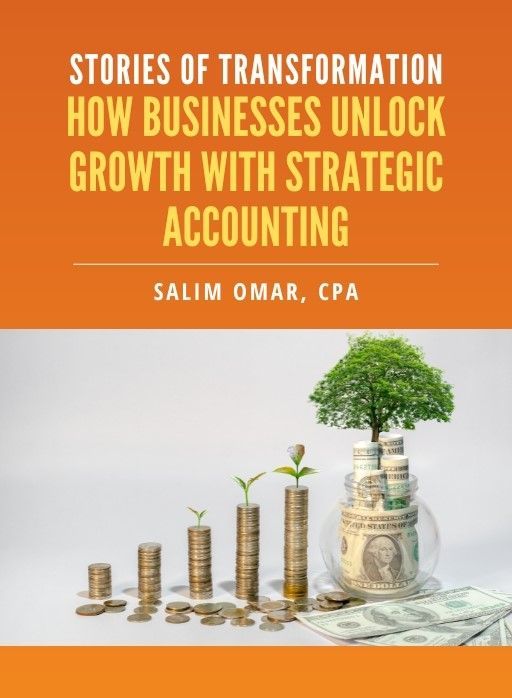The 13-Week Cash Flow Sprint: Rapid Decisions That Unlock Year-End Growth
Year-end is when ambition collides with liquidity. Budgets are nearly spent, collections are slow, and new opportunities surface. The difference between seizing growth and stalling often comes down to visibility. For CFOs and finance leaders, cash visibility isn’t just accounting—it’s the edge that fuels smart growth moves in Q4.
A 13‑week cash flow sprint narrows the horizon to a quarter, giving finance leaders a weekly, tactical view to act fast and with precision. By replacing lagging month-end views with rolling, week-by-week movement of inflows and outflows, teams uncover liquidity early—unlocking cash to fund growth before the close.
Start With Focus, Then Layer Detail
Forecasts fail when they are drowned in noise. The sprint works because it begins with the essentials and then sharpens week over week.
Think of a telescope—start wide to spot the horizon, then zoom to navigate obstacles.
What to Expect
A 7–10 day “map then sprint” cycle:
- Define the horizon: 13 rolling weeks, refreshed weekly.
- Lock inflow categories (customer receipts, financing, other).
- Standardize outflows (payroll, AP, debt service, capex).
- Align cadence—weekly cut on Friday, review on Monday.
Outcome: A single, transparent view of near-term liquidity with no surprises.
From Lagging Reports to Leading Decisions
Static month-end reporting can’t keep pace with Q4 dynamics. Short-horizon cash models shift the focus from historical reconciliation to proactive moves.
What to Track Now
- Collections: Invoice due vs. actual, top 10 customer impact.
- Disbursements:
AP by category, discretionary vs. mandatory spend.
- Debt service:
Timing of covenants, maturities, and interest.
- Growth bets:
Cash capacity for last-minute inventory, marketing, or hires.
Q4 edge: Decision clarity—what to accelerate, what to defer—before liquidity tightens.
Dashboards That Drive Growth Moves
The sprint only works if it’s visible. Dashboards translate raw inflows/outflows into levers the leadership team can pull in real-time.
Essential Views
- AP–AR synchronization:
Reconcile payables aging to receivables forecasts.
- Liquidity runway:
Weeks of coverage under base vs. downside case.
- Variance tracking:
Actual vs. forecast deltas by week.
- Growth headroom: Free cash after fixed obligations.
Outcome:
Confidence to deploy cash strategically while protecting the base.
Controls That Keep It Real
Forecasting without guardrails turns into guesswork. The sprint builds credibility by embedding discipline into the process.
Must-Have Controls
- Owner accountability:
Named leads for AR, AP, and treasury inputs.
- Auditability:
Record every update with the associated assumptions documented.
- Scenario discipline:
Upside/downside modeled consistently.
- Governance:
Enforce CFO approval before updates are shared with leadership.
Outcome:
Fewer debates over assumptions; more alignment on actions.
Year-End Cash Moves: The 2025 Lens
The sprint isn’t just a Q4 tactic—it sets the stage for stronger liquidity management in 2025. Still, year-end is where its impact is sharpest.
Execution Lines: Act Now vs. Park for Later
Act now (fast ROI, low complexity):
- Build a 13-week model in the Excel/ERP module.
- Lock inflow/outflow categories.
- Run a weekly review rhythm with leadership.
- Layer a growth capacity view (discretionary spend vs. runway).
Park for later (complex, model first):
- Integrate advanced scenario planning with predictive AI.
- Tie into dynamic vendor financing or supply chain finance tools.
- Expand to 26- or 52-week rolling forecasts for long-term capital planning.
Integration: Meet Systems Where They Are
Don’t stall waiting for a perfect treasury tool. Start with what’s available, then layer sophistication as the sprint matures.
Best-Fit Approach
- Use ERP exports or bank feeds for inflows/outflows.
- Keep manual overrides light but documented.
- Roll forward each week—drop week 1, add week 14.
- Share dashboards in a format that leadership can scan in minutes.
Outcome: A lightweight process that builds discipline without slowing the close.
Bottom Line
Cash is the currency of Q4 growth, and the 13-week sprint puts it in motion. With clearer visibility, embedded controls, and proactive opportunity signals, finance can unlock liquidity for definitive year‑end moves. Whether you call it short-term accounting discipline, CFO-level planning, or proactive tax prep, the 13-week sprint ensures cash is ready for Q4 opportunities.
No matter the label—short‑term cash forecasting, liquidity sprints, or 13‑week cash models—the result is the same: greater agility, stronger confidence, and expanded capacity to close the year on a high note.
Ready to unlock cash for Q4 growth?
📌 Book a 20-minute “Cash Flow Sprint Setup”—leave with a tailored forecast template, variance checklist, and a two-week rollout plan that fuels year-end momentum.
Free eBook:
Stories of Transformation


Salim is a straight-talking CPA with 30+ years of entrepreneurial and accounting experience. His professional background includes experience as a former Chief Financial Officer and, for the last twenty-five years, as a serial 7-Figure entrepreneur.





